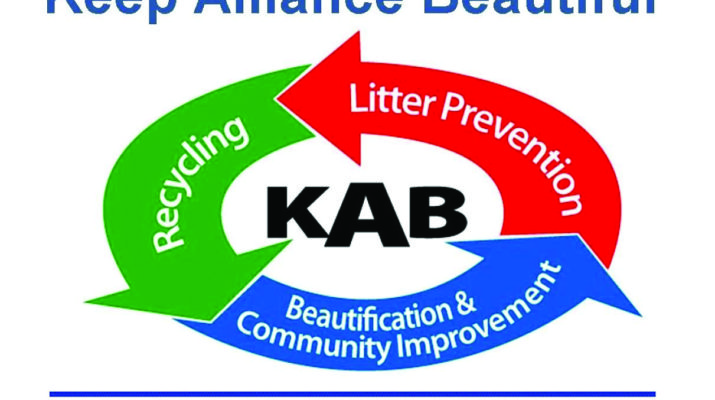April passed without much moisture. Now, we are seeing May flowers and appreciated showers – at least if they pass through without interrupting graduation ceremonies. April also passed without proper reflection on Arbor Day and planting trees versus how to recycle their marketable products.
Nebraska is the home of Arbor Day and most longtime residents will mention “the largest hand-planted forest” near Halsey in the Sandhills. Yet, my Johnny Appleseed filter always brings to mind the Upper Niobrara White NRD (UNWNRD) based in Chadron. Their team has facilitated the planting of millions of trees since our state formed its Natural Resources Districts in 1972.
I grew up on a tract between a pivot circle and a dryland field. Sand dunes buried our first attempt at a tree row on the west edge. Two nannie goats ate the pine trees amid Rocky Montain junipers to the east and south of the house. Now, those hardy evergreens are fullgrown with a range of other trees added through the years. Pine tree replacements along the driveway started life as the same conservation-grade, bare root variety the UNWNRD has sold.
A couple weeks ago, I learned about our local NRD during an interview with Manager Pat O’Brien and Assistant Manager Lynn Webster. Pat explained that most of the NRD’s get 75-80 percent of the trees from Bessey Nursery at Halsey with the balance of area-specific species from other nurseries. In Chadron, they offer varieties “selected by sustainability in Western Nebraska,” he added, including 15 types of shrubs, 10 deciduous and 10 conifers. “Those can vary a little bit year-to-year.”
Sales reflect demand and federal program options. Of the two, Lynn is the veteran. “When I started in the late ‘90s, we were handling 50-70 thousand (a year),” he recalled. By the mid- to late-2000s there was a push for Continuous CRP (Conservation Reserve Program) that paid landowners to plant trees and thereby create wildlife habitat in addition to other environental benefits. Lynn said the biggest years ranged from 600,000 to more than 700,000 trees, which “put us beyond max capacity.” The program has since become more limited, bringing the current demand down markedly though more than when Lynn arrived: 60-75 thousand trees sold annually.
Preparation starts in mid- to late-October with sales based on nursery inventory and each location’s “spring lifter”, the prospective date trees can be dug out in the spring. Some of the UNWNRD’s trees come from South Dakota and North Dakota. The latter had as much snow as Chadron this past season delaying its “lifter” until April 1. Staff conducts sales locally for the most part, yet has offered a “handplant day” for the past 30 years when they deliver to NRCS offices (such as the Alliance location on 24th Street). The district also stores trees in a cooler until Memorial Day to promote quality as customers pick up orders. However, Pat and Lynn encourage people to get them in the ground as soon as possible to take advantage of cooler weather and moisture.
Lynn highlighted NRD efforts around Nebraska – taking “a lead on good quality seedlings – in a dormant state in the cooler. We’ve worked hard on that quality control.” From Halsey, the new trees are even transported in an enclosed, insulated cooler. Based on the county level, “some conservation districts in surrounding states are a little bit smaller and have a harder time with quality control. We have quite a few people in (bordering) Fall River County, S.D., that come get them from us,” he added.
An NRD tree may not be a perfect fit for the front yard though the math looks different when planning a shelterbelt. Pat said theirs is a very affordable option at $1.20 a tree, available in increments of five. Lynn commented that there is a cost-share for larger windbreaks which can be a benefit though funds may be limited. A renovation program for older belts helps remove dead and dying trees and other upkeep. “We’re knowledgeable in the area and what we’ve seen be successful,” Lynn said in regard to the NRD’s support of farmers and ranchers. Interagency cooperation benefits everyone. Also located in Chadron, the NRCS “plant a lot – have federal programs and assist with site preparation. We have a great resource with Nebraska Forest Service housed at the same site. They work in our district and region,” Lynn said.
The three offices often address the same federal priorities. Pat said the number one trend in the past decade has been to “go more with pollinator habitat – more move to shrubs . . . clusters, tight thickets.” Also, Ponderosa pines, which had been exhibiting survivability issues when grown bare root are now being raised with a root plug. Now 50-75 percent of these trees live, an encouraging rate that may lead to other species being grown with a plug. Pat said the challenge is the challenge is to explain the trees are still small, not with the six-foot trees with big pots at retail stores
Looking to the near future, Pat said there is an opportunity to educate the public about carbon sequestration. He said trees are excellent at storing greenhouse gases over the long term. Lynn highlighted technology. “Our association hosts a page for the conservation tree program – it has a good representation of what’s grown across the state. We also have a booklet in our office they can take and do some research.”

